What is Refraction?
- Refraction, not to be confused with reflection, is when a wave is transmitted through a different medium, but is slowed down or sped up as a result.
- Refraction occurs whenever a wave is at least partially allowed through the boundary of a different medium.
- Refraction can result in certain objects appearing "bent" or "broken"

Change in Angle
- When refraction occurs at an angle, there is a change in the angle of the ray, due to the different speed in the new medium.
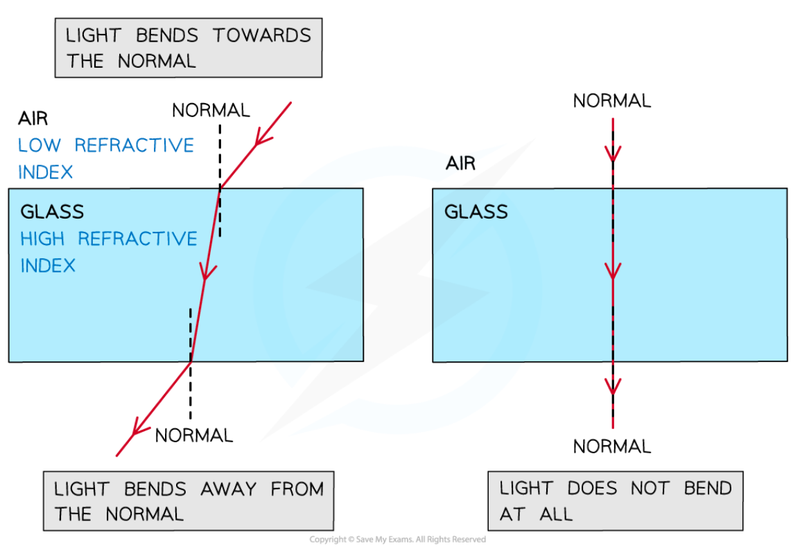
- If the ray is perpendicular to the surface, it just slows down and speeds up without any change in angle.
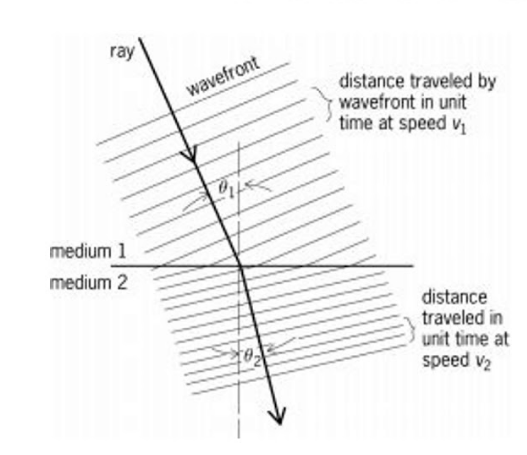
- The angle between the incoming ray and the normal is called the angle of incidence, θincidence or θᵢ.
- The angle between the refracted ray and the normal to the surface is called the angle of refraction, θrefraction or θᵣ.
- Unlike in the reflection of waves, in refraction the angle of incidence and the angle of refraction are not equal.
Refraction During Reflection
- We previously went over how during reflection, not all of the ray is reflected most of the time.
- Instead, some of it gets refracted into the material, where it is either absorbed, transmitted or scattered.
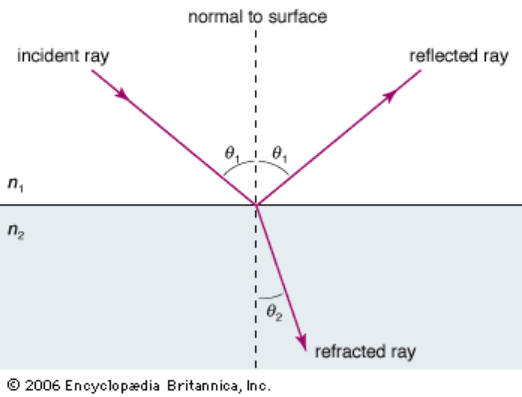
Snell's Law
- Snell's Law is a law by Dutch astronomer and mathematician Willebrord Snellius, and it lets us calculate the angel of refraction.
- The law is expressed as:
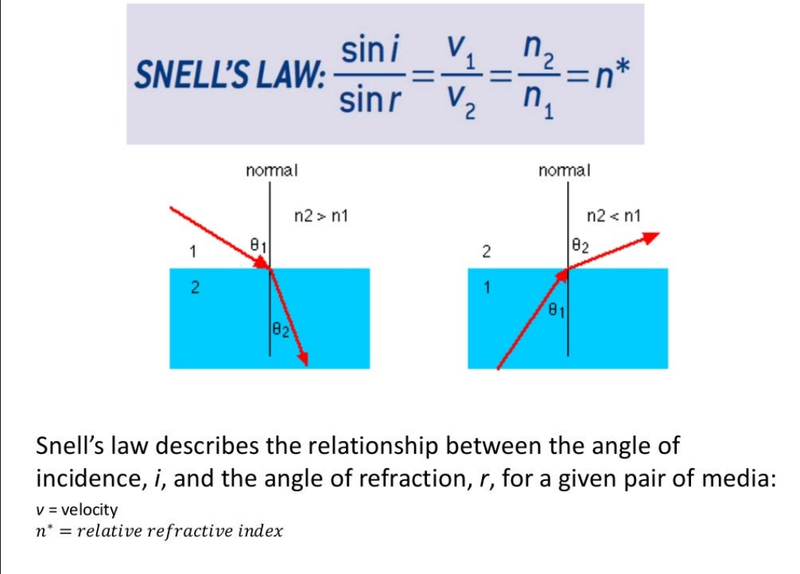
- This law can be used to find the wave speed before and after refraction, the angle of incidence, the angle of refraction, and the refractive indexes of both materials; so it's quite handy!
- From this formula, we can see that the greater the refractive index of the second medium, the smaller the angle of refraction compared to the angle of incidence.
- Likewise, if the refractive index of the second material is smaller, then the angle of refraction is greater than the angle of incidence.
- This means that the difference between the angle of incidence is dependent on the difference between the two refractive indexes.
- The refractive index, n, of a material is given by:

The refractive index for free space is 1, and it can be assumed to be 1 for air as well, although in reality it is a bit greater for air
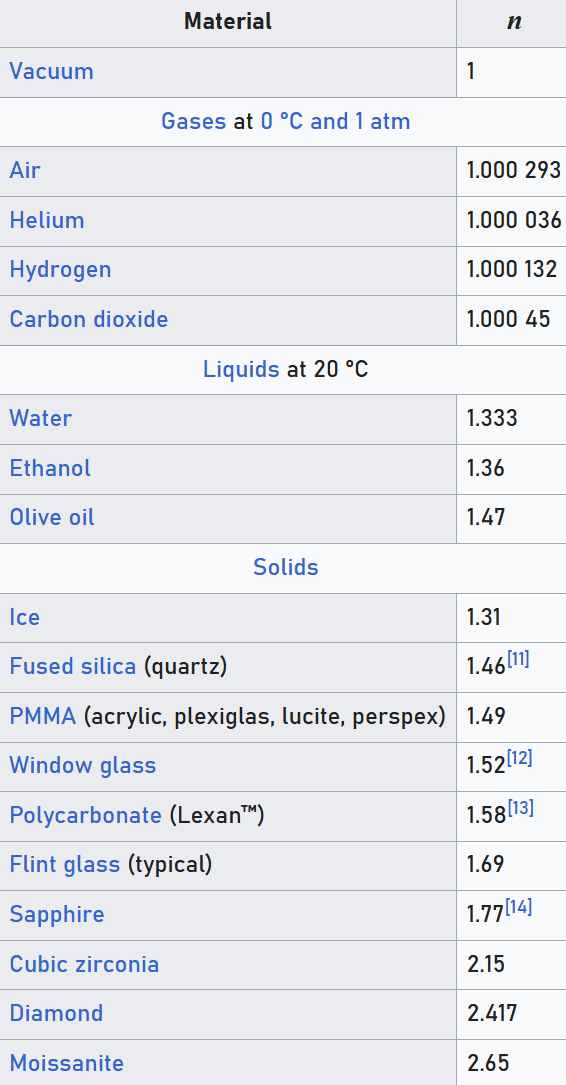
- Generally, the greater the density of a material, the greater its refractive index.
Dispersion
- When white light is refracted as it passes through a glass prism, it will split into the entire spectrum of visible light!
- Colors with shorter wavelengths are refracted more than colors with longer wavelengths, leading to them separating.
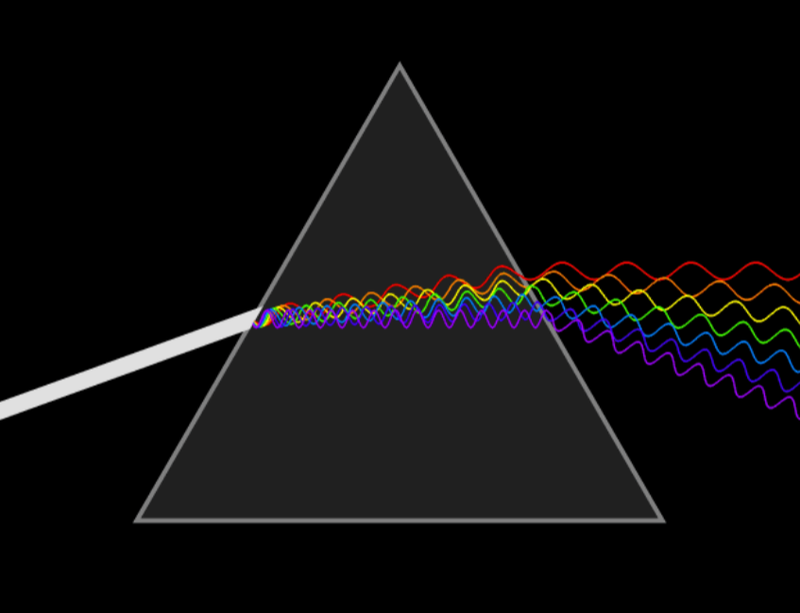
- This is the phenomenon that leads to rainbows occurring!
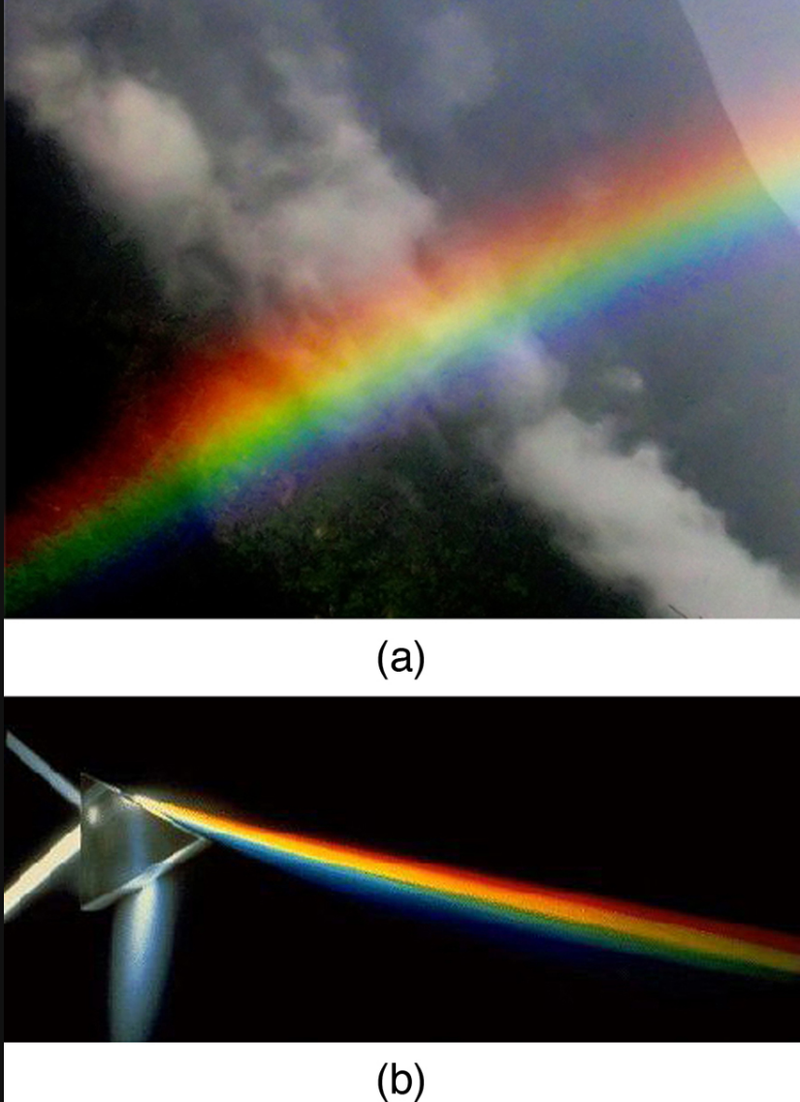
Total Internal Reflection
- Total internal reflection occurs when all waves are reflected back within the medium.
- This means that there is no refraction that occurs.
- It can only occur when a wave meets a boundary with another medium that has a lower refractive index, in which it would travel faster.
Critical Angle
- The critical angle is the largest angle at which a ray of light can strike a boundary with another medium of lower

If the angle of incidence gets larger than the critical angle, then the ray is internally refrected.
If the angle of incidence is less than the critical angle, the ray is refracted.
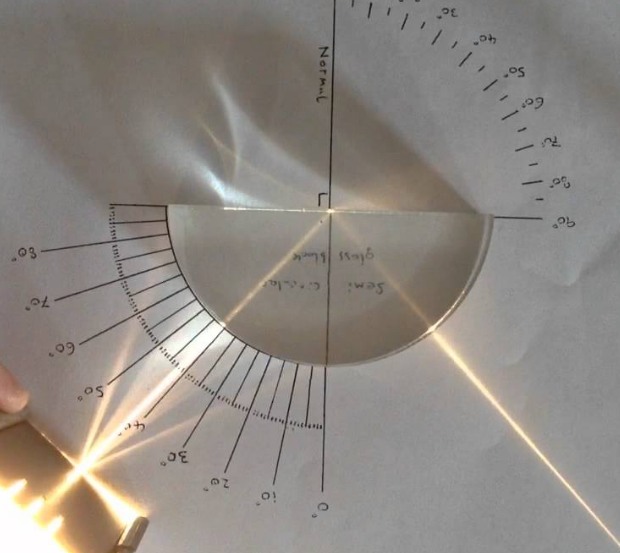
Calculating the Critical Angle
- The critical angle for a medium can be calculated using Snell's law.

- Substituting the values here with the ones in Snell's law, we get:
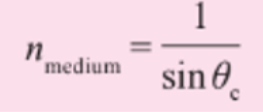
Sources
https://iolaniphysicsblog.blogspot.com/2011/05/blog-13-light.html
https://www.hanlin.com/archives/740483
https://www.slideshare.net/slideshow/5-refraction-snells-law-82/37621127
https://en.wikipedia.org/wiki/Refractive_index
https://ar.inspiredpencil.com/pictures-2023/critical-angle-formula